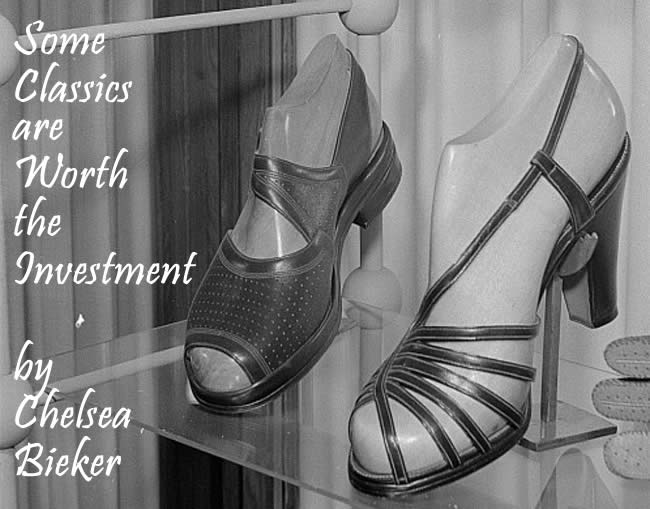 n 1941, a sixteen-year-old girl named Dorothy saved up her earnings picking beans in rural Oregon fields. She had spotted a pair of shoes at a shop in town. High heels. She had never owned anything so frivolous, so fashion forward, and though her mother saw no sense in it, Dorothy made it her mission to earn enough to buy those shoes. Now, more than seventy years later, she still has them.
n 1941, a sixteen-year-old girl named Dorothy saved up her earnings picking beans in rural Oregon fields. She had spotted a pair of shoes at a shop in town. High heels. She had never owned anything so frivolous, so fashion forward, and though her mother saw no sense in it, Dorothy made it her mission to earn enough to buy those shoes. Now, more than seventy years later, she still has them.
When I think of fashion, I think of Dorothy, my grandmother, and those shoes, and her story of how after buying them, she and her friend walked eight miles teetering atop their new heels into Coburg to see a film. I’ve always been enchanted by this tale, this image of the two girls walking carefully along train tracks in strappy wooden-soled shoes—a contrasting image to the landscape of the post-depression era. But they took her through life—through the rest of high school, years as a military wife, hot summers at base camps, motherhood—and they never went out of fashion. I’ve seen them, and if I wore them today, they would still be en vogue, all these years later.
Dorothy is eighty-six old now, and whenever I come to visit, she will try on a new outfit—some she sews herself—and ask how it looks. She gives me a few spins, we discuss matching techniques, and compare jewelry and shawls. It’s something we have always done. But she asks for the advice as if she doesn’t have her own fashion sense. It’s not true. She does.
I know this because she raised me. I spent my budding years of girlhood under her and my grandfather’s roof. When I think of who my first fashion icon was, I think of her. She was a hairdresser for most of her working life, and after she retired, she continued styling out of the laundry room, the smell of permanent solution wafting through the hall. Never have I seen her with a hair out of place. She has never gone gray, just various shades of fabulous blonde.
But she never encouraged my vanity, and chores were more important than playing dress up in our house, and buying brand names wasn’t acceptable if you could get the same thing somewhere else for cheaper. These were tough lessons sometimes, especially during the craze of the Gap monogrammed fleece in sixth grade, or the skin tight Abercrombie cropped tee-shirts I had to have in high school. I may have pouted then, but her lessons fueled my fashion identity, and as an adult I can see that they served me well. She is right that some classics are worth the investment, and I picture those shoes in her closet, as perfectly aged as she is. In the fall issue, Chelsea Bieker reviewed Alan Hollinghurst's A Stranger's Child.
In the fall issue, Chelsea Bieker reviewed Alan Hollinghurst's A Stranger's Child.



